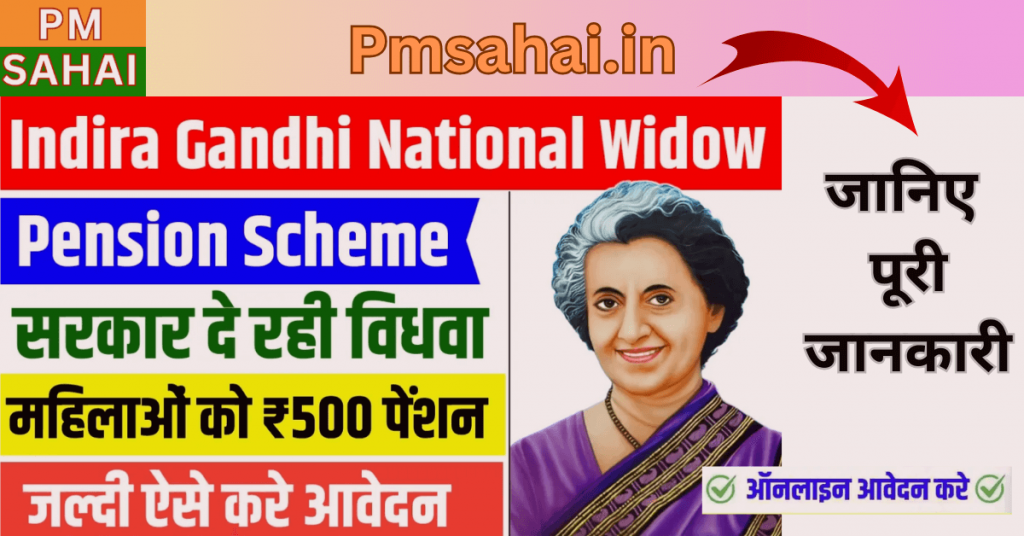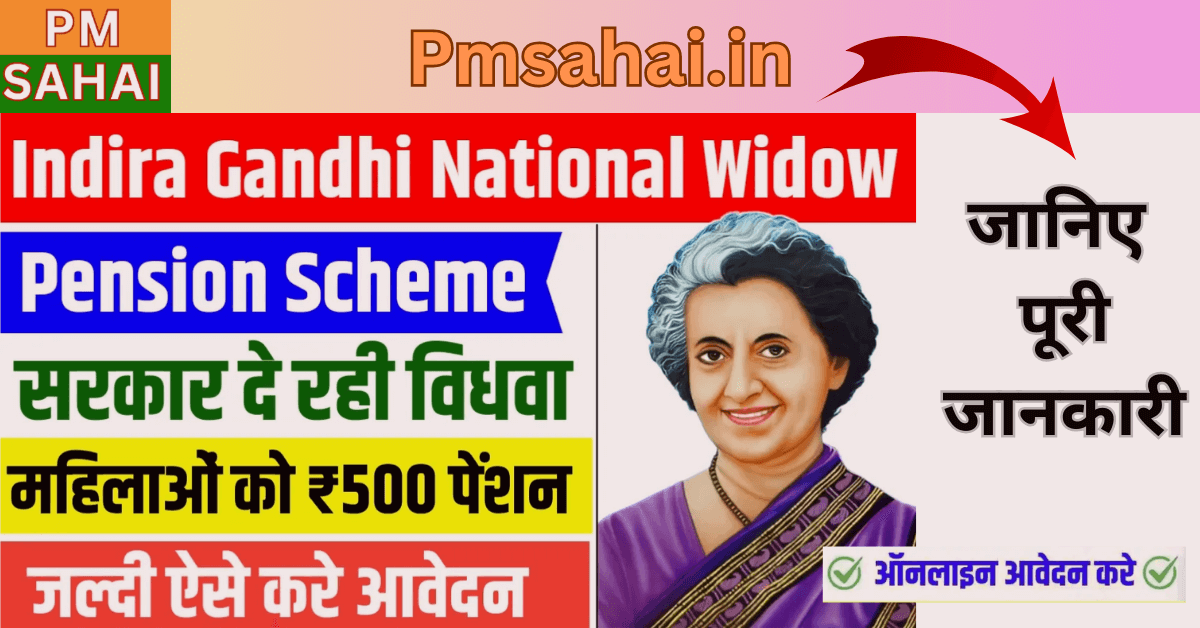Indira Gandhi National Widow Pension Scheme: Under the National Social Assistance Programme (NSAP) by the Ministry of Rural Development, Government of India, this scheme is designed to address the financial vulnerability of widowed women by providing them with a modest but steady pension. The scheme not only reflects the government’s commitment to women’s welfare but also highlights the urgent need for gender-sensitive social security mechanisms in India.
Objective of the Scheme
The Primary objective of the Indira Gandhi National Widow Pension Scheme is to offer financial assistance to destitute widows, helping them sustain themselves in the absence of their spouse and without stable income sources. Widowed women, especially those from economically weaker sections, often face financial hardships, social exclusion, and emotional distress. This scheme seeks to reduce that burden by ensuring at least a minimal level of income security.

Eligibility Criteria
To be eligible for benefits under the IGNWPS, the applicant must meet the following conditions:
- Gender and Marital Status: The applicant must be a widow.
- Age Limit: The widow must be between 40 and 59 years of age. On reaching the age of 60, she is shifted to the Indira Gandhi National Old Age Pension Scheme (IGNOAPS).
- Below Poverty Line (BPL): The beneficiary must belong to a Below Poverty Line (BPL) household as per the criteria defined by the Government of India.
- Residency: The applicant must be a resident of India.
Some states have further relaxed or expanded these criteria, depending on local welfare programs and budget allocations.
Benefits of the Scheme
Under IGNWPS, eligible widows receive a monthly pension from the central government. As of the latest update:
- The central government provides ₹300 per month to each beneficiary.
- Many state governments contribute an additional amount, thereby increasing the total monthly pension (in some states, it may reach up to ₹1,000 or more).
While ₹300 from the central fund may appear modest, the combined central and state contribution offers a crucial financial cushion to beneficiaries. It enables them to afford basic necessities such as food, medicines, and clothing.
How to Apply
Eligible applicants can apply through the following methods:
- Offline Application: Visit the local Panchayat office, Block Development Office (BDO), or District Social Welfare Office to collect and submit the application form.
- Online Application: Many states have digitized the application process. Applicants can visit the official portal of their respective state government’s social welfare department to apply online.
- Documents Required:
- Proof of age (birth certificate, voter ID, etc.)
- Death certificate of the husband
- BPL card
- Residence proof
- Bank account details
- Aadhaar card
Once verified, the pension amount is credited directly into the applicant’s bank account.
Impact and Importance
The scheme has been instrumental in:
- Reducing destitution among widows, particularly in rural and semi-urban areas.
- Providing a sense of social dignity and financial autonomy.
- Encouraging financial inclusion through direct bank transfers.
- Promoting awareness about women’s rights and entitlements under various welfare programs.
For many women who have no support system after their spouse’s death, the pension scheme has become a reliable source of monthly income.
Challenges and Limitations
Despite its noble intent, the scheme faces several challenges:
- Low Pension Amount: The amount of ₹300 is widely considered inadequate, especially given inflation and rising living costs.
- Lack of Awareness: Many eligible women remain unaware of the scheme and do not apply due to illiteracy or lack of outreach.
- Delays in Processing: In some states, bureaucratic delays and cumbersome documentation can stall the approval process.
- Exclusion Errors: Inaccuracies in BPL data may prevent genuine beneficiaries from availing the scheme.
Conclusion
The Indira Gandhi National Widow Pension Scheme is a critical pillar in India’s social security Framework, especially for vulnerable women who have lost their spouses. While it offers a much-needed financial respite, there’s ample room for enhancing the coverage, increasing the pension amount, and improving delivery mechanisms.

